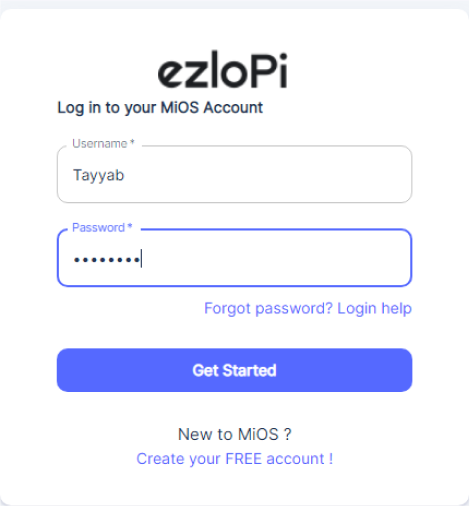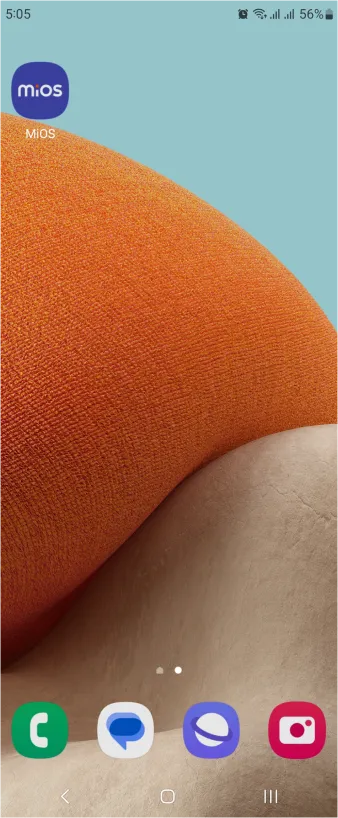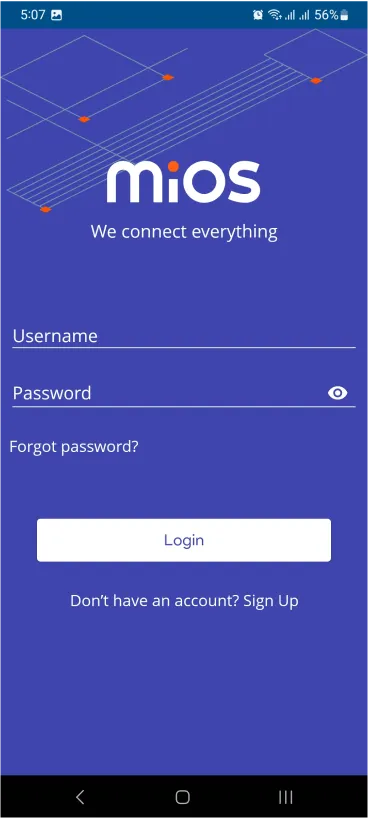
Light Up Your World with EzloPi Automation!
Smart Home Lighting System with 8 channel Relay
The EzloPi smart devices provide automation through simple, customizable use with our open-source EzloPi platform, making daily life easier and improving human-machine interactions.
Before moving into this example, it is very important to know about the device registration, provisioning and converting the ESP32 device into an EzloPi device along with knowledge of Web Flasher, MiOS Mobile Application for Android/iOS and the MiOS Web Application.
1. About this example
This example shows how you can connect your home appliances to an EzloPi smart device and convert your boring home into a smart home. By using an 8 channel relay module, EzloPi smart device enables you to control the status of your appliances from anywhere in the world. You can monitor if an appliance is turned on or off at any given time and change its status on the fly.
2. Project Demonstration Video
Welcome to the project demonstration video section. The following video showcases the key aspects of Smart Home Lighting System with 8 channel Relay on EzloPi platform, providing a visual walkthrough of its implementation.
2. Circuit Diagram & Interface
The following components are required for interfacing with the EzloPi device:
- ESP32 as an EzloPi smart device.
- 8 channel 5v Relay module
The wiring diagram is represented as follows:


The following connections are made in order to complete the entire circuit setup:
From ESP32 to the Relay Module:
- Connect the D22 pin from the ESP32 to the 1st Channel of the relay module.
- Connect the D21 pin from the ESP32 to the 2nd Channel of the relay module.
- Connect the D19 pin from the ESP32 to the 3rd Channel of the relay module.
- Connect the D18 pin from the ESP32 to the 4th Channel of the relay module.
- Connect the D5 pin from the ESP32 to the 5th Channel of the relay module.
- Connect the D4 pin from the ESP32 to the 6th Channel of the relay module.
- Connect the D2 pin from the ESP32 to the 7th Channel of the relay module.
- Connect the D15 pin from the ESP32 to the 8th Channel of the relay module.
- Connect the GND to the GND of the relay module.
- Connect the ‘VCC’ terminal to 3V3.
From Relay Module to 220VAC Bulb:
- Connect the common pins(middle pin) of the relay module to the neutral of mains supply.
- Connect Normally open terminals of relay modules with one of the terminal of each bulb.
NormallyOpen1 <----------> Bulb1
NO2 <----------> B2
NO3 <----------> B3
NO4 <----------> B4
NO5 <----------> B5
NO6 <----------> B6
NO7 <----------> B7
NO8 <----------> B8 - Connect the second terminal of each bulb with the phase of mains supply.
3. Interfacing the 8 Channel Relay Module using EzloPi Web Flasher:
Set up your device/hardware by visiting config.ezlopi.com

- Log in using the credentials which you just set earlier while signing up.

- Now, click on the Connect Device button and a pop-up window will appear.

Now, select COM Port to which your ESP32 device is connected. In our case, the COM3 port is used.
Click Connect.

- If you are new to this and it's your first time configuring, select Create new Device ID. Enter Wifi SSID and Wifi Password.
- In the Device Configuration, tab click on Digital Output.

- A window will open for inputting the following parameters:
- Set Device subtype to Relay of channel 1.
- Set OUT GPIO to 22.
- Set Resistor to PULL UP.
- Set the default value to LOW.
- Then Click Apply Button.

- Then click again on Digital Output :
- Set Device subtype to Relay of channel 2.
- Set OUT GPIO to 21.
- Set Resistor to PULL UP.
- Set the default value to LOW.
- Then Click Apply Button.

- Then click again on Digital Output :
- Set Device subtype to Relay of channel 3.
- Set OUT GPIO to 19.
- Set Resistor to PULL UP.
- Set the default value to LOW.
- Then Click Apply Button.

- Then click again on Digital Output :
- Set Device subtype to Relay of channel 4.
- Set OUT GPIO to 18.
- Set Resistor to PULL UP.
- Set the default value to LOW.
- Then Click Apply Button.

- Then click again on Digital Output :
- Set Device subtype to Relay of channel 5.
- Set OUT GPIO to 5.
- Set Resistor to PULL UP.
- Set the default value to LOW.
- Then Click Apply Button.

- Then click again on Digital Output :
- Set Device subtype to Relay of channel 6.
- Set OUT GPIO to 4.
- Set Resistor to PULL UP.
- Set the default value to LOW.
- Then Click Apply Button.

- Then click again on Digital Output :
- Set Device subtype to Relay of channel 7.
- Set OUT GPIO to 2.
- Set Resistor to PULL UP.
- Set the default value to LOW.
- Then Click Apply Button.

- Then click again on Digital Output :
- Set Device subtype to Relay of channel 8.
- Set OUT GPIO to 15.
- Set Resistor to PULL UP.
- Set the default value to LOW.
- Then Click Apply Button.
- After clicking the apply button you can see a table of your setting in the device configuration tab.
- Press the Flash Device button.
- A window will appear on the bottom right side of the screen displaying “Please press BOOT button while flashing begins.”

- Hold the BOOT button down until the next window appears on the bottom right side of the screen which says “Installation prepared. Please release the boot button now.”

- Release the BOOT button from your ESP32 when this pop-up on the bottom right window appears.

- After some time, a popup will appear saying Device Flashed Successfully! This means that your device has been set up successfully.
4. MiOS App
You can download the MIOS Android app from the Google Play Store and Apple App Store.
- After downloading the app, proceed to install the application and open it.

- Using the MIOS mobile application, create a new Ezlo Cloud account using the sign-up option. If you already have an account, you may proceed to log in.

- After successfully logging in, you will be able to see the number of controllers connected such as a lamp, fan, or any other device in the MiOS app. Tap on any controller of your desired ID:

- You will be able to see the status of your controller whether it is online or offline. Access the device dashboard, and tap the device. The following view of the dashboard will appear:

- After opening the web dashboard, you will be able to see the tile of your connected device. The state of the 8 Channel relay module is controlled by the just touching screen button as shown on the web.
- When the button glows blue after touching, the relay module will turn ‘ON’ the bulb.

- Similarly, When the button color turns white after touching, the relay module will turn “OFF” the bulb.
5. MiOS Web Application
- After configuring the controller with the EzloPi web flasher, head to ezlogic.mios.com

- Use the same credentials to log in that you used for configuring the controller with the web flasher.

- After opening the web dashboard, you will be able to see the tile of your connected device. The state of the 8 Channel relay module is controlled by the just touching screen button as shown on the web.
- When the button glows blue after touching, the relay module will turn ‘ON’ the bulb.

- Similarly, When the button color turns white after touching, the relay module will turn “OFF” the bulb.

eZlopie Products A single-channel 5V relay module $00.00

eZlopie Products Momentary switch $00.00

eZlopie Products Level Shifter Module (BSS138) $00.00

eZlopie Products ESP32
$00.00

eZlopie Products AC Lamp and Holder
$00.00












